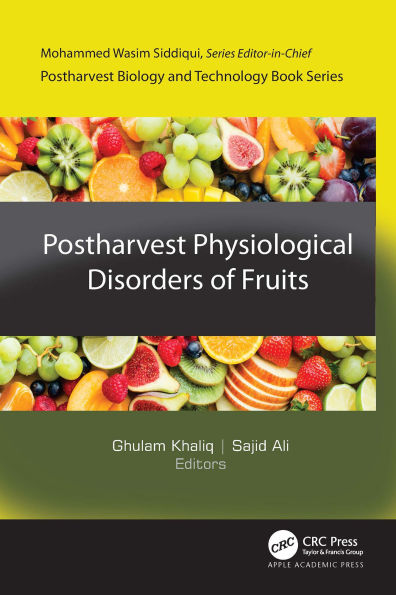Fruits are valuable products; they are, however, highly perishable in nature and need special measures to maintain their quality while transporting them long distances for sale. Postharvest physiological disorders of fresh fruit are serious problems that arise from environmental and management factors, affecting the quantity and quality of fruits. This new volume focuses on these postharvest physiological disorders of fresh fruits, describing their diverse morphological structures, compositions, and general physiology, as well as the technologies for the effective handling and treatment of fresh fruits.
This volume covers important information on the postharvest physiological disorders of fruits that are caused by temperature, rain, humidity, pruning, irrigation, harvest procedures, and nutrient deficiencies. The book details the modern and sophisticated diagnostic methods, management, and technologies to confront these challenges.. The book gives comprehensive explanations regarding the causes for the occurrence of physiological disorder symptoms and the possible mechanisms to control these abnormalities.
Organized by the type of fruits, this volume focuses on the physiological disorders that affect tropical and subtropical fruits that include mango, banana, citrus, pomegranate, litchi, papaya, guava, fig, cashew, etc., and also covers the postharvest physiological disorders of temperate fruits, such as apple, grape, peach, cherry, strawberry, kiwi, persimmon, apricot, and plum.
Key features:
- Provides the most recent advances in understanding the postharvest physiological disorders of fresh fruits
- Reviews the fundamental and innovative technologies for the management of the postharvest physiological disorders
- Covers preharvest factors affecting the postharvest quality of fresh fruits
- Outlines the preharvest and postharvest causes of physiological disorders and handling technologies for the highly perishable fruits
This volume provides informative and practical information that will aid researchers, scientists, industry professionals and faculty and students in the understanding the principles, food safety techniques, and the mechanisms of postharvest physiological disorders for the best management of fresh fruits.
Fruits are valuable products; they are, however, highly perishable in nature and need special measures to maintain their quality while transporting them long distances for sale. Postharvest physiological disorders of fresh fruit are serious problems that arise from environmental and management factors, affecting the quantity and quality of fruits. This new volume focuses on these postharvest physiological disorders of fresh fruits, describing their diverse morphological structures, compositions, and general physiology, as well as the technologies for the effective handling and treatment of fresh fruits.
This volume covers important information on the postharvest physiological disorders of fruits that are caused by temperature, rain, humidity, pruning, irrigation, harvest procedures, and nutrient deficiencies. The book details the modern and sophisticated diagnostic methods, management, and technologies to confront these challenges.. The book gives comprehensive explanations regarding the causes for the occurrence of physiological disorder symptoms and the possible mechanisms to control these abnormalities.
Organized by the type of fruits, this volume focuses on the physiological disorders that affect tropical and subtropical fruits that include mango, banana, citrus, pomegranate, litchi, papaya, guava, fig, cashew, etc., and also covers the postharvest physiological disorders of temperate fruits, such as apple, grape, peach, cherry, strawberry, kiwi, persimmon, apricot, and plum.
Key features:
- Provides the most recent advances in understanding the postharvest physiological disorders of fresh fruits
- Reviews the fundamental and innovative technologies for the management of the postharvest physiological disorders
- Covers preharvest factors affecting the postharvest quality of fresh fruits
- Outlines the preharvest and postharvest causes of physiological disorders and handling technologies for the highly perishable fruits
This volume provides informative and practical information that will aid researchers, scientists, industry professionals and faculty and students in the understanding the principles, food safety techniques, and the mechanisms of postharvest physiological disorders for the best management of fresh fruits.

Postharvest Physiological Disorders of Fruits
452
Postharvest Physiological Disorders of Fruits
452Related collections and offers

Product Details
| ISBN-13: | 9781040333129 |
|---|---|
| Publisher: | Apple Academic Press |
| Publication date: | 09/23/2025 |
| Sold by: | Barnes & Noble |
| Format: | eBook |
| Pages: | 452 |
| File size: | 18 MB |
| Note: | This product may take a few minutes to download. |
